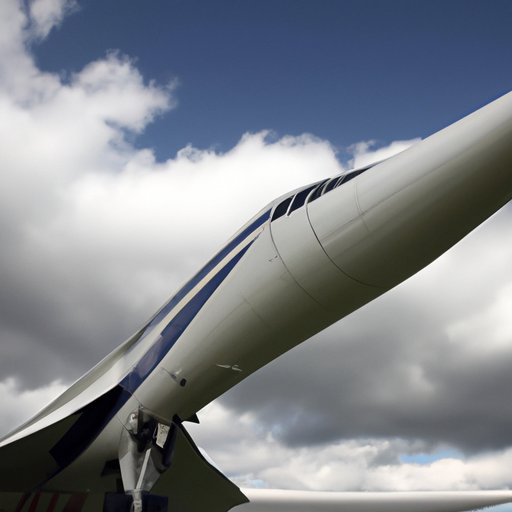I. Introduction
The Concorde was a supersonic jet that captured the world’s imagination with its futuristic design, speed, and luxury. Its delta wing shape and sleek exterior were symbols of innovation and progress. However, after more than 25 years of operation, the Concorde was retired in 2003. In this article, we will explore the reasons behind its retirement and examine the technical, economic, and environmental factors that led to this decision.
II. A historical perspective
The Concorde was jointly developed by the French and British aerospace industries, and it made its first flight in 1969. It was designed to reach speeds of up to 1,350 miles per hour, which was more than twice the speed of sound. Its development was made possible by the technological advancements in materials, engines, and aerodynamics.
When the Concorde began commercial flights in 1976, it quickly gained popularity among the wealthy and business travelers who valued its speed and luxury. Passengers could cross the Atlantic in just over three hours, and the onboard service was comparable to that of a five-star hotel. However, the Concorde was prohibitively expensive, and its use was limited to a few routes with high demand.
III. Technical issues
Despite its impressive performance, the Concorde faced several technical challenges that affected its safety and reliability. In 2000, a Concorde crash in Paris killed 113 passengers and crew. Investigators found that the crash was caused by a piece of metal that had fallen from another aircraft and punctured the Concorde’s fuel tank, leading to a fire that brought the plane down.
In addition, the Concorde’s maintenance and mechanical issues became more frequent as the aircraft aged. The planes required a high level of maintenance due to their complex systems and the stresses of supersonic flight. There were also problems with the availability of spare parts and skilled technicians, which increased the costs and downtime of the Concorde fleet.
IV. Economic considerations
The Concorde had always been a costly aircraft to operate, and rising fuel prices made it even more expensive. The Concorde’s fuel consumption was several times higher than that of other commercial jets, which made it vulnerable to fluctuations in oil prices. In addition, the competition from other airlines offering cheaper and more efficient flights began to eat into the Concorde’s profitability.
The decline in demand for supersonic travel also played a role in the retirement of the Concorde. After the 9/11 attacks, air travel declined sharply, and many people became more price-conscious and less inclined to pay a premium for faster flights. As a result, airlines began to retire their Concorde fleets and focus on their more profitable routes and aircraft.
V. Environmental impact
The Concorde was notorious for generating high levels of noise and air pollution, especially during takeoff. This was a major concern for communities living near airports and contributed to the Concorde’s restricted routes and operating times. In addition, the environmental impact of the Concorde’s sonic booms and emissions sparked protests from environmental groups who argued that the benefits of supersonic travel did not justify the harm to the planet.
These issues were among the reasons why the Concorde was retired. Although there were efforts to reduce the Concorde’s noise and emissions, such as using more efficient engines and flying at higher altitudes, they were not enough to overcome the negative impact of supersonic flight on the environment and public health.
VI. Personal stories
The retirement of the Concorde had a significant impact on the people who worked on and flew the aircraft. Airline employees who had spent years servicing, maintaining, and operating the Concorde found themselves facing job losses and uncertain futures. Passengers who had flown on the Concorde shared their memories and experiences of the unique and glamorous travel experience, while aviation enthusiasts mourned the loss of a technological marvel.
VII. Legacy of Concorde
The Concorde may have been retired, but its impact on aviation and technology cannot be overstated. Its technological advancements, such as the use of carbon composites, shaped the design and construction of future aircraft. The Concorde also pushed the boundaries of what was possible in aviation and inspired new generations of engineers and designers.
Moreover, the Concorde was a symbol of the excellence and ambition of the countries that developed and flew it. Its legacy remains a testament to human ingenuity and the desire to reach new heights, both literally and figuratively.
VIII. Conclusion
The retirement of the Concorde was a complex decision that was influenced by a variety of technical, economic, and environmental factors. While the Concorde remains an icon of aviation history, it also serves as a cautionary tale about the challenges and limitations of supersonic travel. As we look to the future, it is clear that any new supersonic aircraft will need to overcome these challenges and strike a balance between speed, safety, and sustainability.
